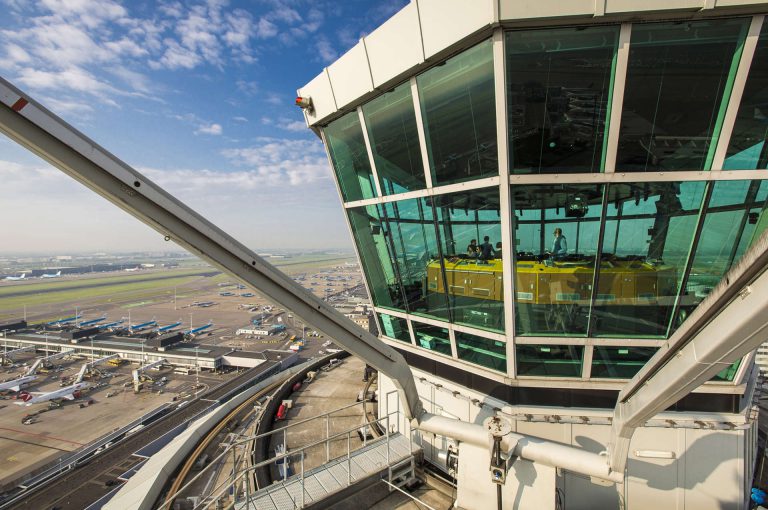One Of The Most Significant ATC Work-Load Reducing Innovations In Years!
On the basis of different information sources (e.g., radar screen, paper or electronic flight progress strips, radio and interphone communication), air traffic controllers have to control complex, dynamic, and time-constrained traffic situations in order to identify potential conflicts and risky relationships between aircraft and to be able to resolve them. Therefore, they have to perceive, comprehend, and anticipate multiple characteristics and flight paths of many aircraft while new incoming aircraft create new traffic relationships for evaluation. Diagnosis, decisions on future cognitive activities, and actions are based on these insights into current and anticipated structures of the changing situation. – SKYbrary

In many parts of the world prior to COVID 19, numbers of new Air Traffic Control (ATC) personnel were needed to manage the growing workload brought about by the high demand for air travel. New hires, even those well trained constantly work to improve situational awareness. This level of awareness is not a skillset that can be rushed. It comes from experience yet even the most experienced can struggle when delays and missed approaches are caused by congestion in and around the airport. We can help to alleviate these conditions. Our Advanced ILS Antennas focus and direct guidance signals to aircraft on instrument approach with greater precision than older generation “legacy” antennas. Their characteristic narrow-radiated` beams mitigate congestion delays and reduce the incidents of missed approaches by minimizing ILS Critical Areas that interfere with taxiing and essentially eliminating signal interference from ILS Critical Area is violations. Deconflicting and simplifying airfield operations are both essential to lowering burdens and stress upon ATC that can lead to loss of situational awareness.
We believe that the level of responsibility and the pressures that accompany your position should be reason enough that you should be provided the most reliable workload reducing equipment and technologies. As often is the case though, policy and layering of technologies sometimes prevents this from happening. Advanced ILS Antennas on the other hand can reduce your workload without requiring you to learn another technology system. Read on to find out more ways that Advanced ILS Antennas reduce ATC workloads.
To Simplify ATC Operations You Must First Simplify The Airport Environment
For several decades, the hope was to develop modern technologies from GPS that could simplify airport environments and increase capacities by replacing “legacy” aviation technologies that were limiting airport throughput capacity and efficiency. A conscious decision was made by some to concentrate research & development (R&D) funding on newer technologies at the expense of legacy technology R&D. Throughout that time, it had been a repeated promise that these new technologies were going to “simplify” your ATC responsibilities. However, because the onslaught of minor changes designed to simplify your job did not address the major issues, there has been little workload improvement for ATC.
The leading cause of the issue limiting airport efficiency originates on the ground, not in the air. Simply put, airports are attempting to use limited capacity ILS Antenna systems in large demand environments. These antenna systems cannot keep up with air traffic at busy airports and the resulting delays ripple out causing congestion and delays at many other airports often to the point of stressing large segments of airspace systems. Meteorological conditions also play a large part in airspace congestion and frequently increase the workload on ATC causing delays and cancellations of flights that can affect large segments of airspace systems.
After decades of limited improvements to airport efficiency and capacity, leaders in the industry understand that they have been overly optimistic about the reliability of satellite based aviation technology while underestimating it’s vulnerabilities. Meanwhile, there seems to be fewer numbers of people who qualify for ATC positions that are attracted to the highly stressful responsibilities of your job. Furthermore, retention levels for ATC employees under present circumstances remain low in many parts of the world. This will likely not change until the circumstances change especially as drone and UAV technologies join in the mix.
Our Solution
A major portion of making ATC an attractive career choice is achieved by the same solution for reducing flight delays and their negative impacts upon all stakeholders. It is not complicated. The solution is to utilize high capacity Advanced ILS Antenna systems in high traffic demand airport environments. This solution will significantly lower the stress levels to which ATC is subjected by reducing incidents of aviation congestion in and around airports. This solution is available now!
Watts Antenna Company manufactures a full compliment of Advanced ILS Antennas that simplify ATC operations while increasing airport capacity. Our Antennas assist to more effectively normalize air traffic flow during peak air travel hours and in meteorological challenging environments. These Advanced ILS Antennas increase throughput capacity by radiating a highly directive narrow RF signal-in-space, thereby reducing ILS Critical Areas so significantly that aircraft can taxi forward to the Runway Safety Area (RSA) hold short line without interfering with approaching aircraft on ILS coupled approach. This will reduce confusion, enhance operational safety and simplify ATC operations. Best of all, we have the capability now!
Look at the extensive list of benefits that our highly directional beam steered Advanced ILS Antennas provide ATC personnel … enhances operational safety, eliminates taxiway hold line confusion, reduces sequencing challenges, seamlessly transition from VFR to IFR operations, reduces flight delays, reduces the ILS Critical Area, improves airport throughput capacity, reduces pilot confusion, reduces air traffic controller pressures, reduces air traffic congestion near airport, reduces runway occupancy times (ROT), reduces landing and takeoff cycle (LTC), adds no additional workload on ATC personnel, no additional training required, supports ATC personnel retention efforts, enhances ATC recruitment efforts, reduces communication workload for ATC…
